Copyright Ernesto Blanco Calcagno/www.airpressman.com IG: @airpressman
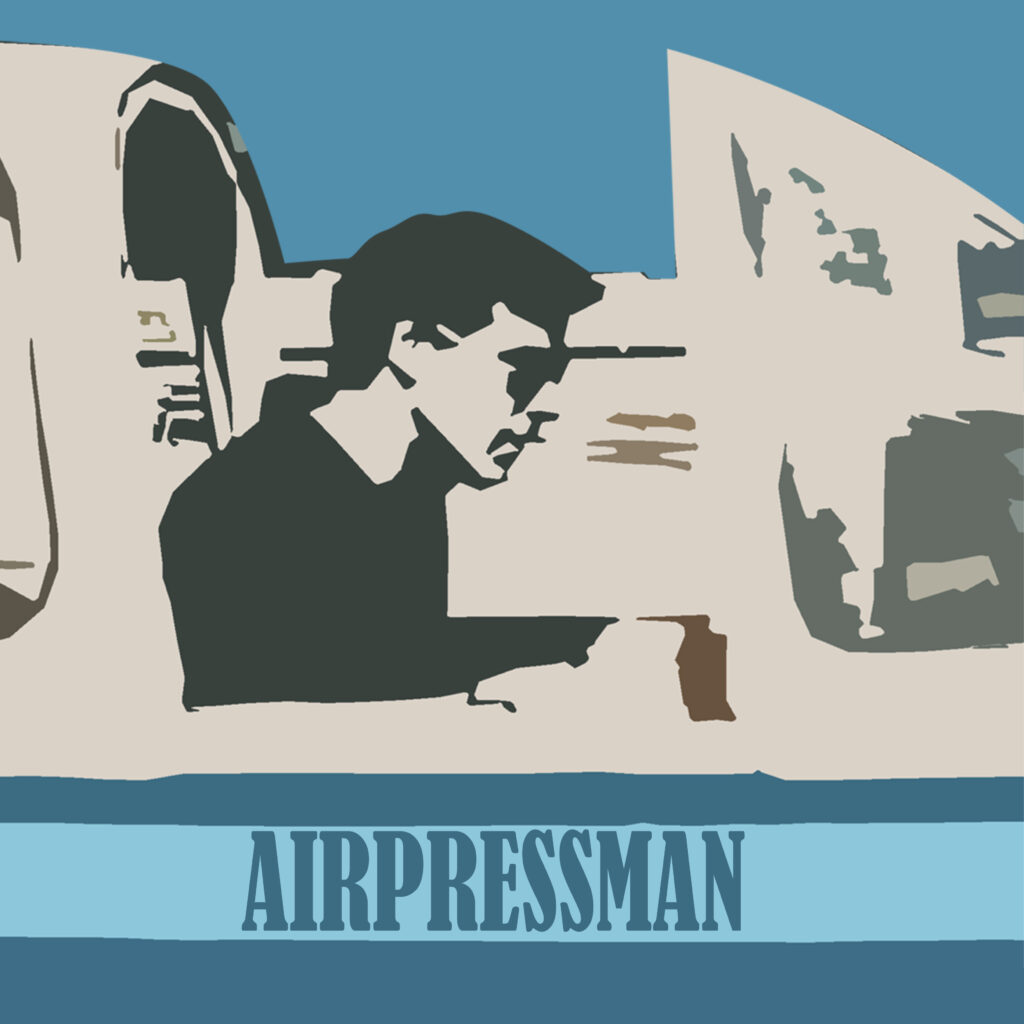

During the 27th and 30th June, 2022, the Fuerza Aérea Uruguaya (FAU – Uruguayan Air Force) conducted a combined air-to-air refuelling (AAR) exercise titled TANQUE 2022, with air assets operating from the Brigada Aérea II (Air Brigade II) located near the city of Durazno, central Uruguay. The purpose of this operation was to train, qualify and re-qualify the crews of both the Cessna A-37B Dragonfly attack jets and KC-130H Hercules air transport/tanker (K for tanker, C for Cargo) aircraft on AAR. The Dragonfly – the main combat type in the FAU´s fleet and its only aircraft fitted with an air refuelling probe in its nose – are assigned to the Escuadrón Aéreo no. 2 – Caza (Air Squadron no. 2 – Fighters) based at Durazno, whilst the Hercules belongs to the Escuadrón Aéreo no. 3 – Transporte (Air Squadron no. 3 – Transport). The latter deployed from the Brigada Aérea I (Air Brigade I) – near the nation’s capital of Montevideo – the base sharing the runways of Montevideo’s International Airport Gral. Cesáreo L. Berisso at Carrasco.
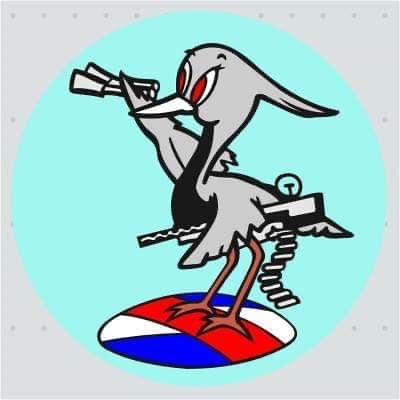

With TANQUE conducted every few years, this particular exercise was a historical occasion for the FAU, being the first where all participating aircraft were Uruguayan. The small South American nation acquired two former Ejército del Aire (SAF-Spanish Air Force) Lockheed Martin KC-130H Hercules air tanker/transport aircraft in December 2020. These four engined turboprops were operated by the SAF’s Ala 31 (Air Wing 31) at Zaragoza Air Base, Aragón province, until December 2020; being replaced by the more modern and capable European built Airbus A-400M Atlas.
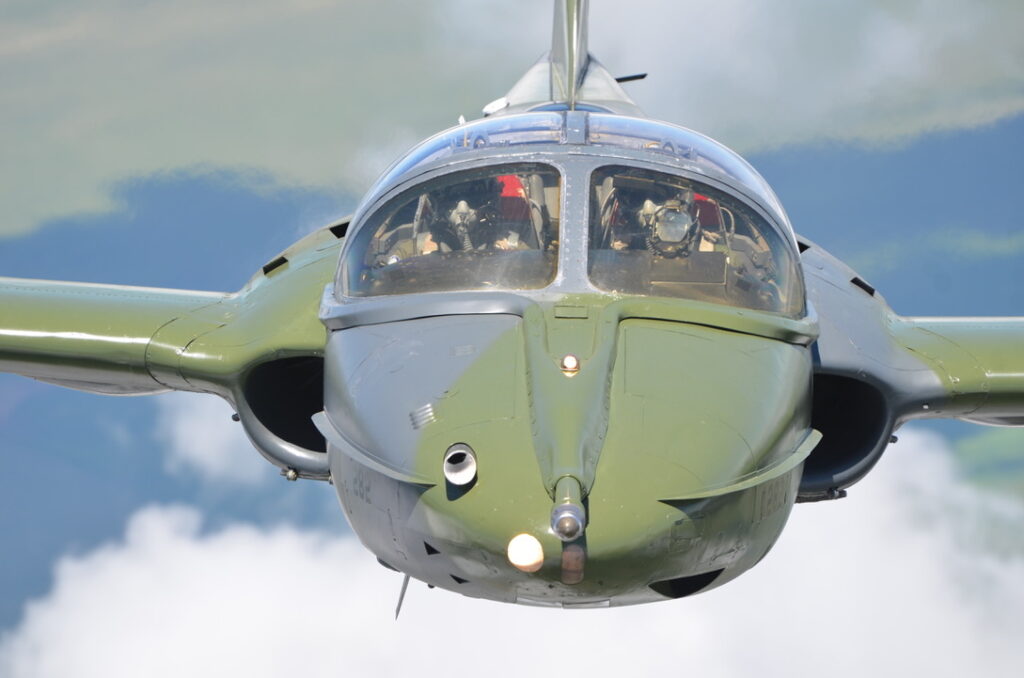

HERCULES TANKER: AERIAL GAS STATION!


As the aircraft are fairly recent in the FAU´s inventory and the force is proud of its newly acquired capabilities, the Lockheed KC-130H Hercules (model 382C-55D) still turns heads in Uruguay. Designated as TK-10 by its previous operator (Spanish Air Force) they still proudly show the original paint scheme. Within the FAU they have been registered as FAU 594 & 595 (serial numbers LM 4648 & 4642 respectively). The aircraft built during 1975/76 are newer and better equipped than the C-130B-LM that replaces; namely FAU 591 ex-61-0971 (c/n 3668) and 592 ex-60-0295 (c/n 3596) built in 1960 and 1961. These aircraft were bought in 1992 with a third former former USAF C-130B, ex-58-0744 (c/n 3541) obtained in April 1994. The latter registered as FAU 593, never flew and was utilised as a source for spares.
Fitted with four Allison T-56-15 turboprop engines – each producing 3,750 hp – the aircraft is capable of operating day and night it has two drogue equipped refuelling stations (HDUs), located one on each wing outboard of the engines. Each station is made of a refuelling pod, 26m (85ft) of hose, MA-2 coupling and 1 m (27in) diameter paradrogue (basket). External underwing fuel tanks can carry up to 9,000lb of fuel each, extending by four hours the aircraft’s range. In the cabin a removable fuselage fuel tank of 3,600 USgal (13,627.48 lit) can be installed. The in-flight fuel transfer to the receiver aircraft can be made directly from the tanker’s six wing tanks, even when the removable tank is fitted. Fuel could be transferred from the internal fuselage tank to the tanker’s own engines to extend her range if necessary. The transfer from the fuselage tank is achieved by two internally mounted electrically driven pumps, with a maximum pumping rate of 300 USgal (1,135.62 lit) per minute to each host aircraft. In an emergency all the fuel could be jettisoned at a rate of 750 gallons per minute.
(For a full account about the TANQUE exercises – beyond the scope of this update – please follow this link: TANQUE)
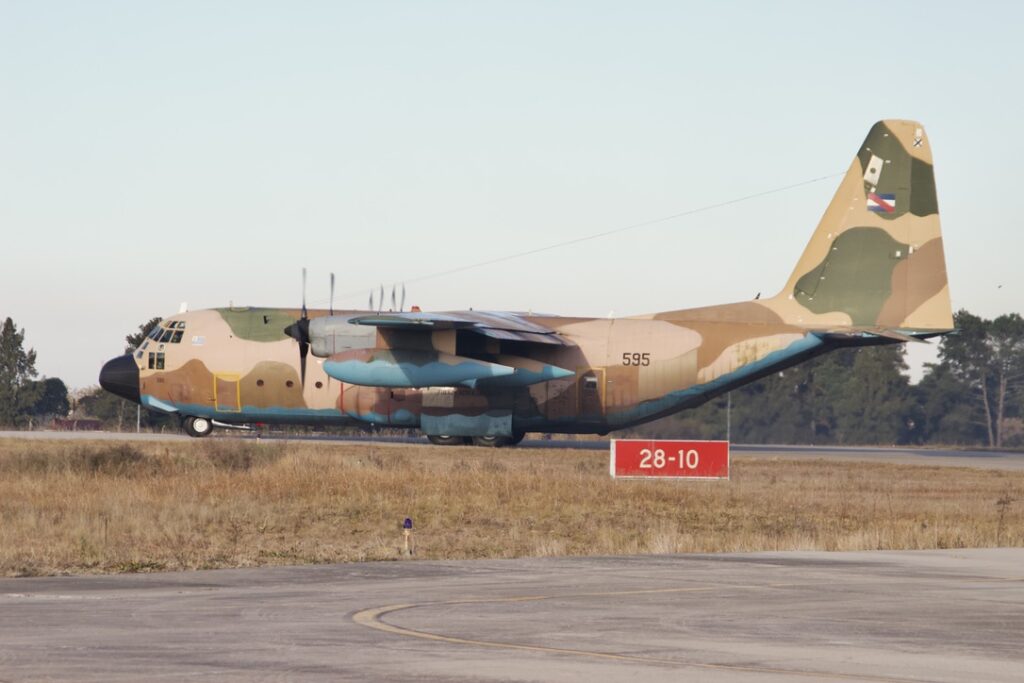
With these modifications the normal take off weight went up to 155,000lb (20,000lb more than the B version) for basic operations or to a maximum of 175,000lb for military missions. In the cabin 92 passengers or 64 paratroopers can be carried, as well as small vehicles, a mid size helicopter and the fore-mentioned removable internal fuel tank. The altitude band for refuelling operations is from 1,500ft to 23,000ft; with a speed range from 195 to 250Kt (different parameters – and a larger basket – would be used for refuelling helicopters, however at time of writing the FAU has no rotary wing assets with a AAR probe). The aircraft have been extensively modernised by the Spanish firm CASA in a process which began during November 1995 and included the collaboration of the manufacturer Lockheed Martin. The program included improvements in four areas: structure, avionics, communications and self-protection systems. The external half-wings sections were changed and the flight deck and crew seats were armoured, to afford crew protection in critical phases of operations in a hostile environment. As for the flight and navigation systems, comprehensive work was carried out that included the incorporation of the MIL-STD-1553B digital data bus that integrates all the updated systems. Visibly in the cockpit are the four large Allied Signal screens, however less visible are the two mission computers and the new Bendix RDR-1400C radar; useful for bad weather avoidance and search and rescue missions.
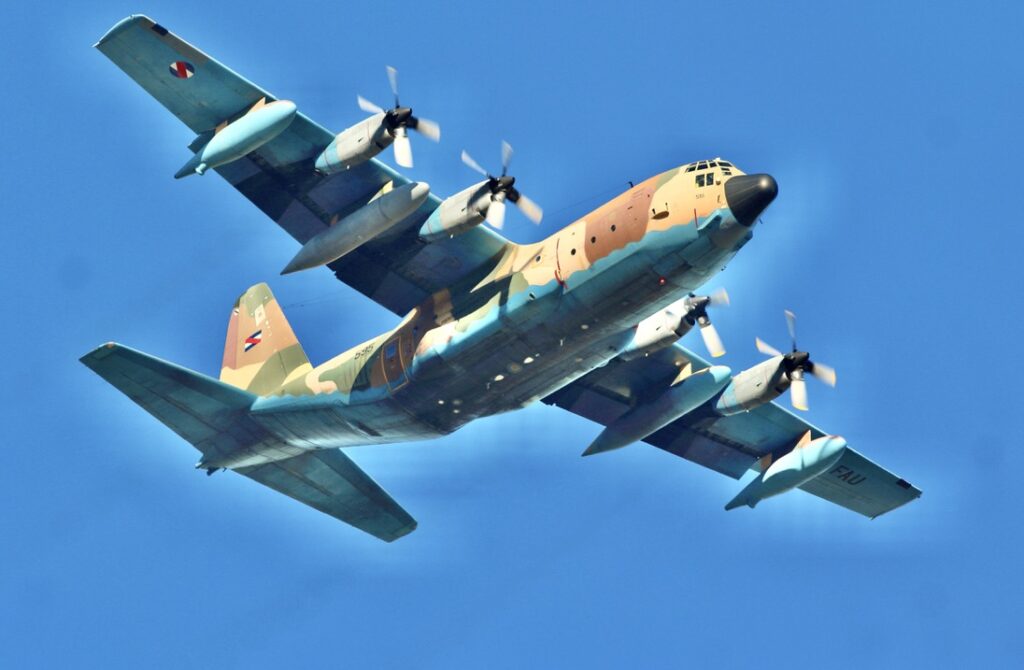
New navigation instruments such as a VOR/ILS from Collins, a TACAN and two inertial navigators with integrated GPS from Litton were also added. A Honeywell MILACAS-XR TCAS II (version 7) is present (The C-130Bs had no TCAS). For communications, the new equipment included a Magnavox AN/ARC-164 “Have Quick” UHF radio. Two HF radios AN/ARC-127 from Collins and finally two ADF AN/ARN 149 and an IFF AN/ANX-100 transponder being the ADF and IFF from Allied Signal. In the aircraft self-protection section, the Sanders AN-ALQ-156 Radar Warning Receiver (RWR) was incorporated which provides 360º coverage, and the AN/ALE-47 chaff and flare dispensers from the firm Tracor. Both systems -sadly- have been deactivated in Spain on the Uruguayan aircraft.
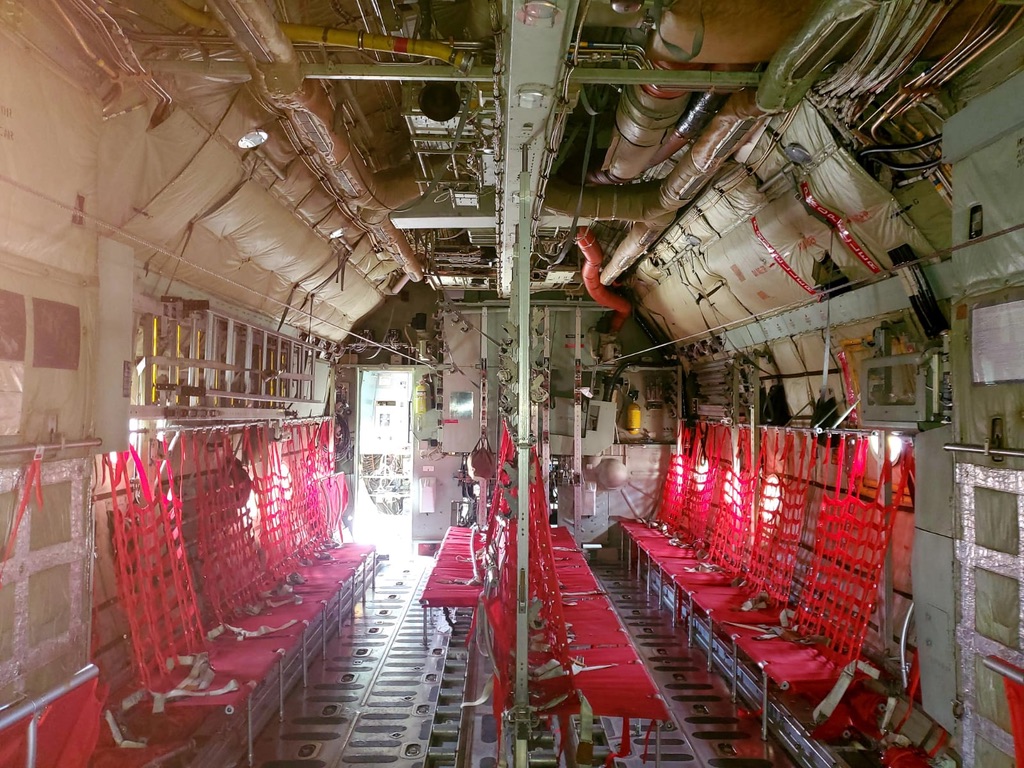
The KC-130H fleet should have a long life in Uruguay as they have many Equivalent Flight Hours (EFH) remaining. This is a parameter designed by Lockheed Martin where the aircraft safe operation period is determined by analysing several factor such as the severity of the missions completed against the flight hours; instead of solely relying on flight hours and cycles to establish safe periods of operation.
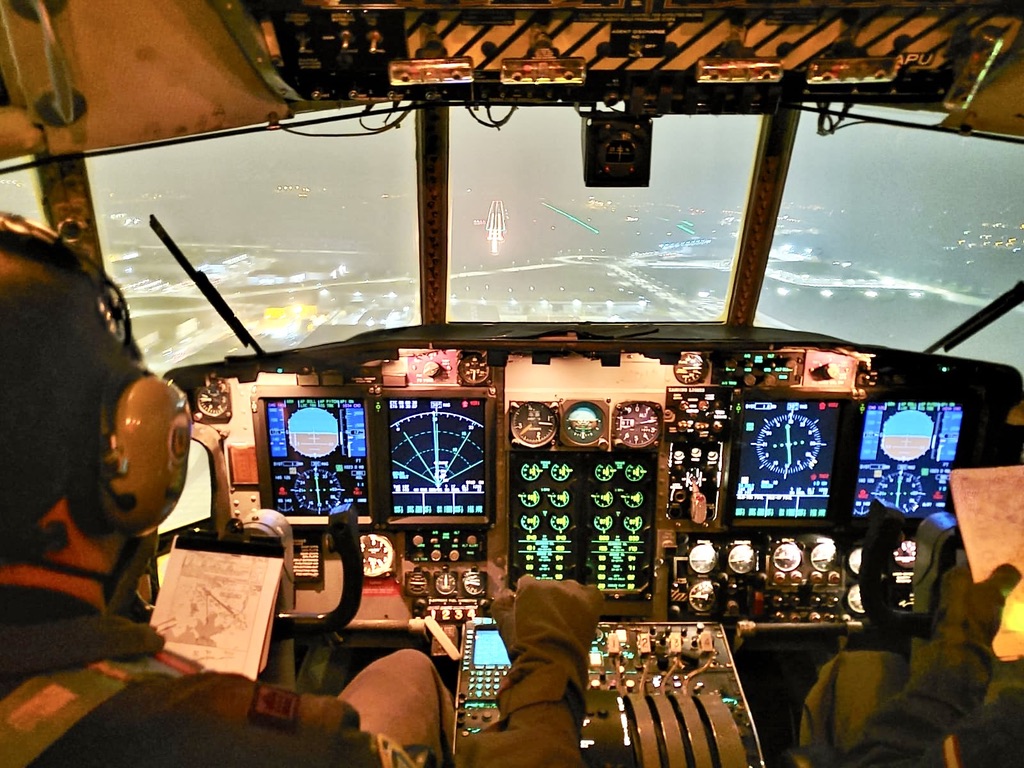
THE A-37B DRAGONFLY: PILOTS & GROUND CREWS
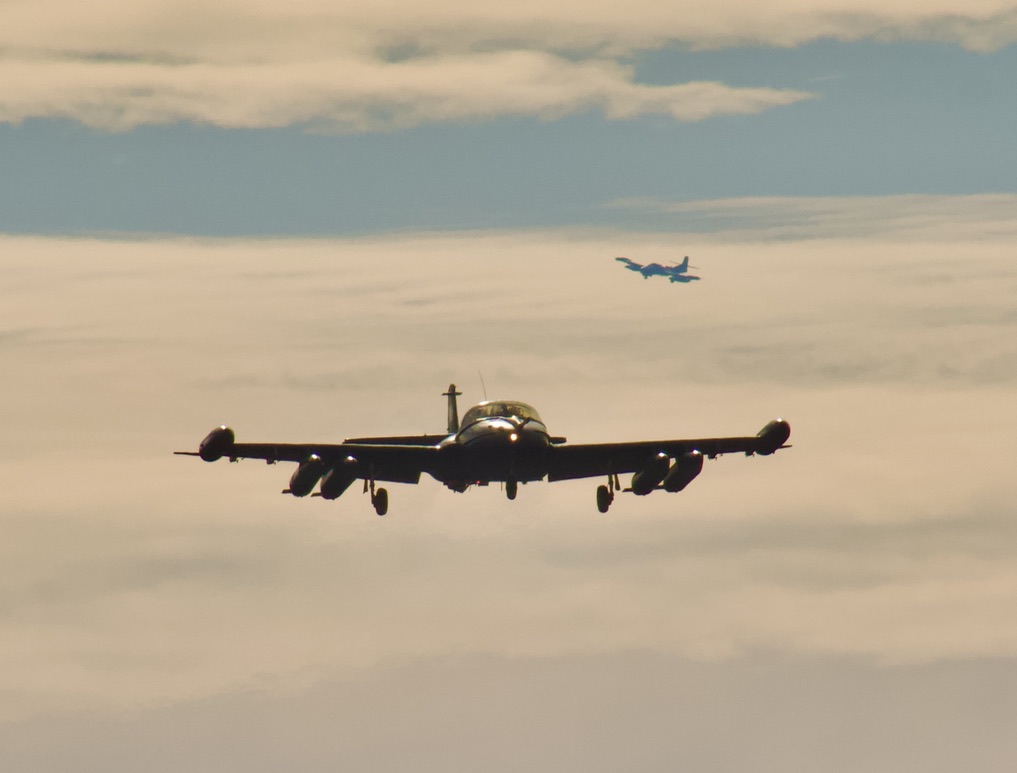
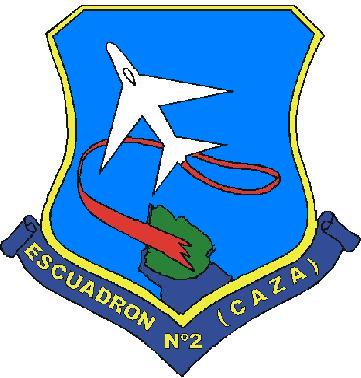
On recent years the TANQUE exercises were carried out with the cooperation of the Fuerza Aérea Argentina (FAA-Argentinian Air Force). The neighbouring nation’s air force provided the air tanker also in the shape of a KC-130H with instructors to train the Uruguayan transport crews as well as the Dragonfly pilots. The Hercules tutors would come from the I Brigada Aérea (I Air Brigade) from El Palomar Air Base in Buenos Aires Province, where the two FAA KC-130Hs are located (registrations TC-69 a Falklands/Malvinas veteran) and TC-70. The fighter advisors were two Lockheed Martin A-4AR Fightinghawk pilots from the Grupo 5 de Caza – G5C (Fighter Group 5) stationed at V Brigada Aérea (Air Brigade V) located at Villa Reynolds, San Luis province.
Escuadrón 2 pilots first trained on AAR in 1990 on four USAF A-37B detached to Uruguay, alongside US instructor pilots of the 24th Tactical Air Support Squadron “Golden Jaguars” (from Howard AB, Panama Canal Zone), with a USAF KC-135 tanker being the chosen platform at the time.
Once more at TANQUE 2022 the Argentinian personnel were also present – this time without their KC-130H – and acted on the initial sorties as instructors on both the FAU Hercules and the Dragonfly jets. On later missions, the training on the Dragonfly was conducted by FAU instructors, namely the present and former squadrons commander. During the previous TANQUE 2010 FAU Dragonfly pilots qualified as AAR instructors consequently training their own colleagues. It must be stressed the enormous debt of gratitude felt by the FAU personnel to their Argentinian brothers – who stated in no uncertain terms – the impossibility of carrying out these missions without their assistance and expertise, provided for many years, distinctively when Uruguay lacked AAR aircraft.

(For a full account about the TANQUE exercises – beyond the scope of this update – please follow this link: TANQUE)
Typically there would be two assignments per day – as ten FAU pilots were participating – one in the morning plus one mid afternoon. Two Dragonfly jets were made available for the sorties, and as on previous exercises, following a mission the jets landed and stopped at one end of the runway 03-21. Whilst there the aircraft left engine was shut down to allow the trainee pilot (seated on the left) to abandon ship, whilst the right engine was kept running. This action, overseen on the ground by large groups of Squadron 2 maintenance specialist who communicated with the pilot on the right hand seat and attentively inspected the jets for possible faults, expedited the whole process on the ground, saving time and the wait of the large Hercules circling overhead!
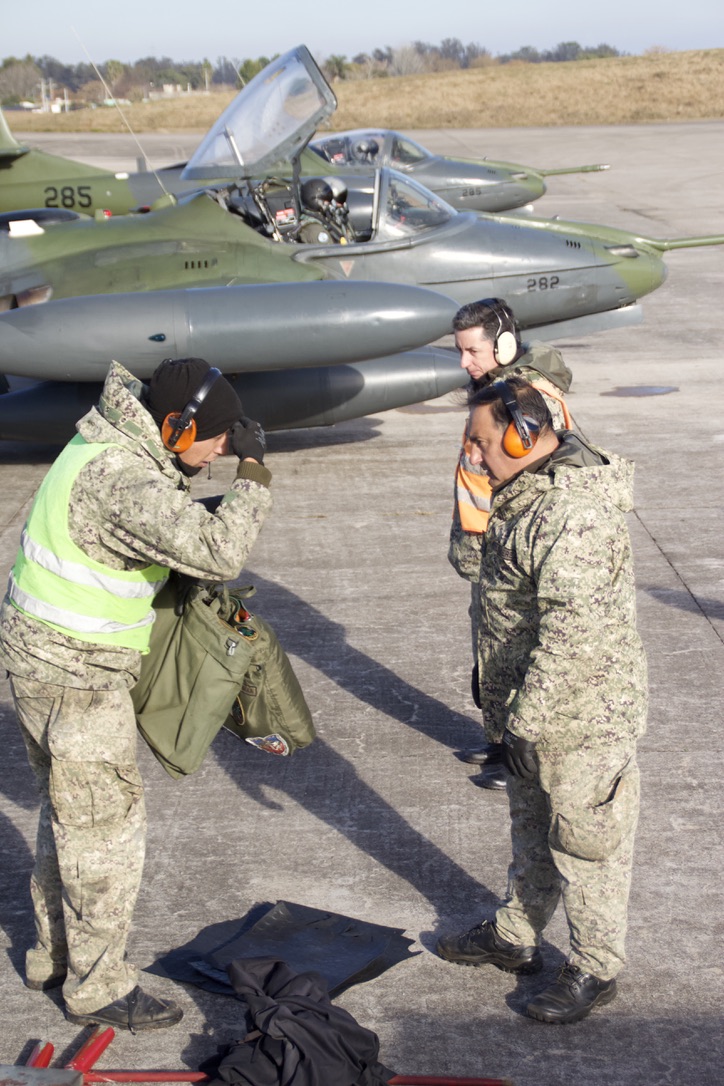
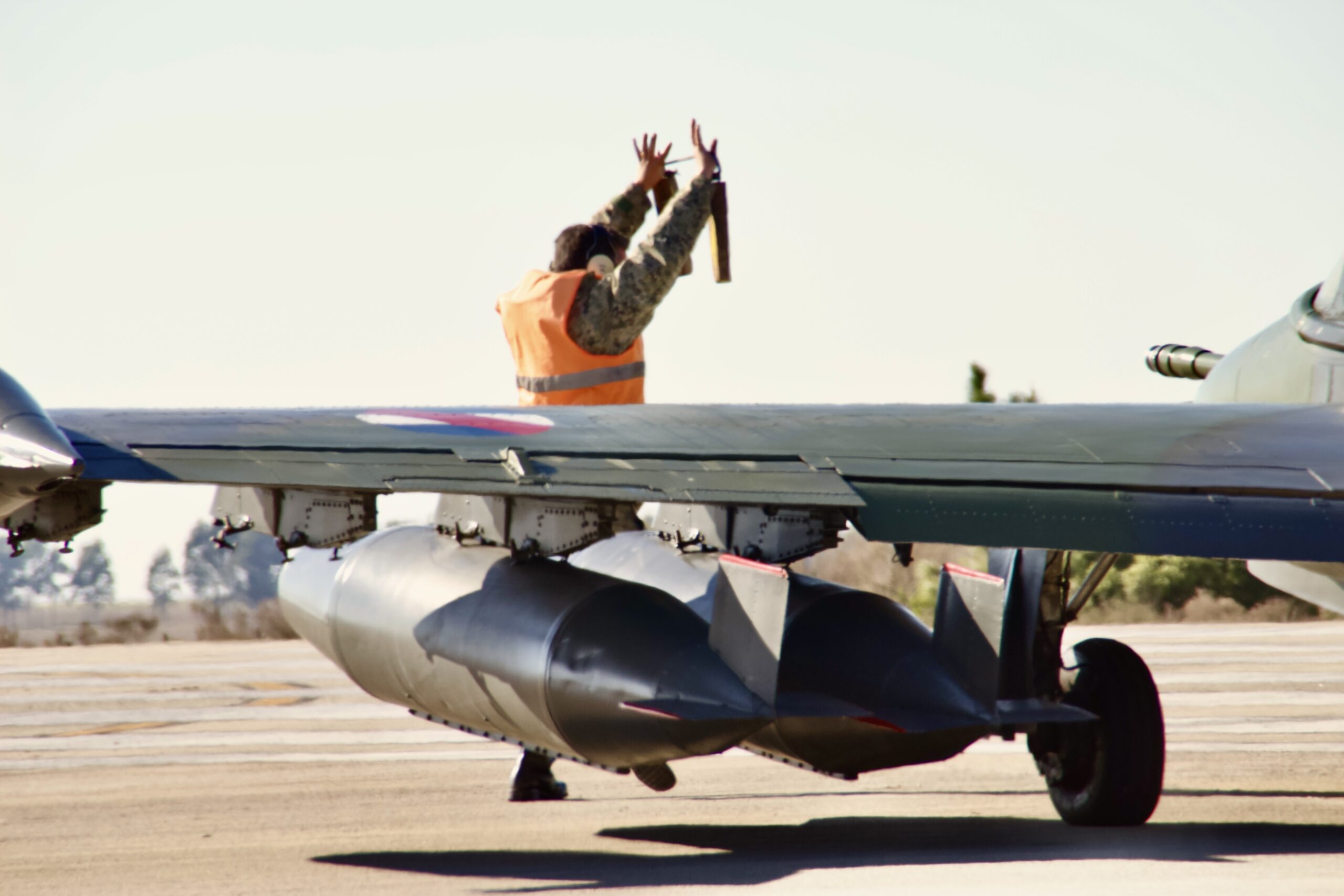
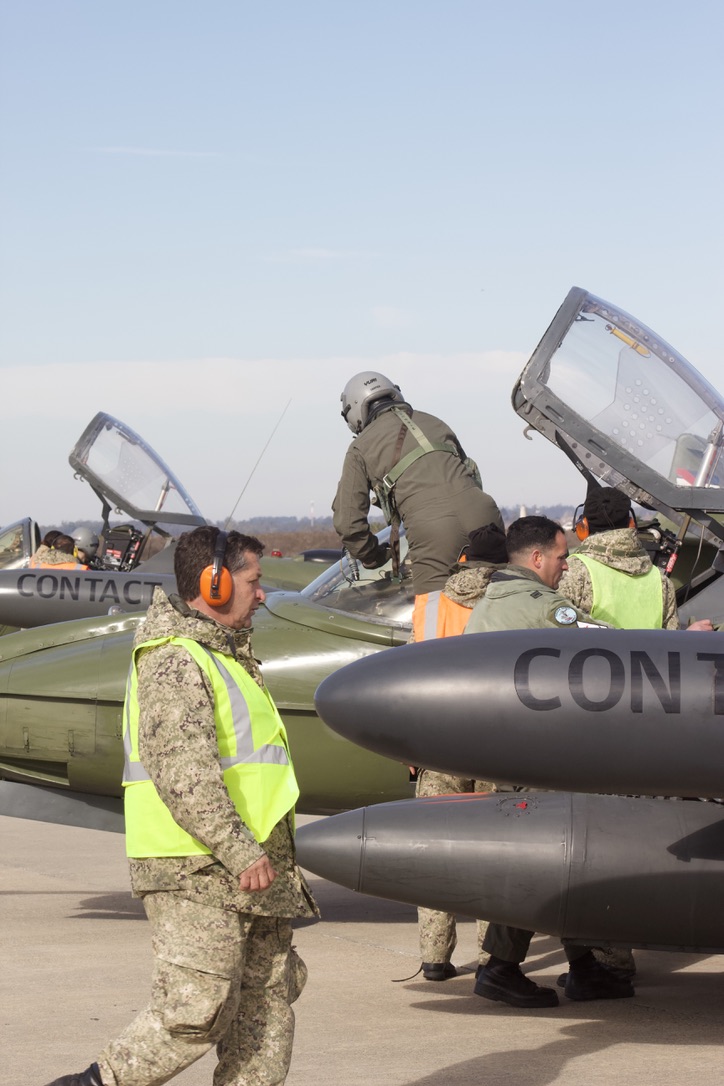

To find out more about the FAU Dragonfly features and operations, check these features on our Website: A-37B ROAD DEPLOYMENT: “Highwaymen” Martin Baker Ejection Seats-Safer life for an old jet. A-37B “Dragonfly” – Post Maintenance Fly Test
KC-130H: TANKER READY!
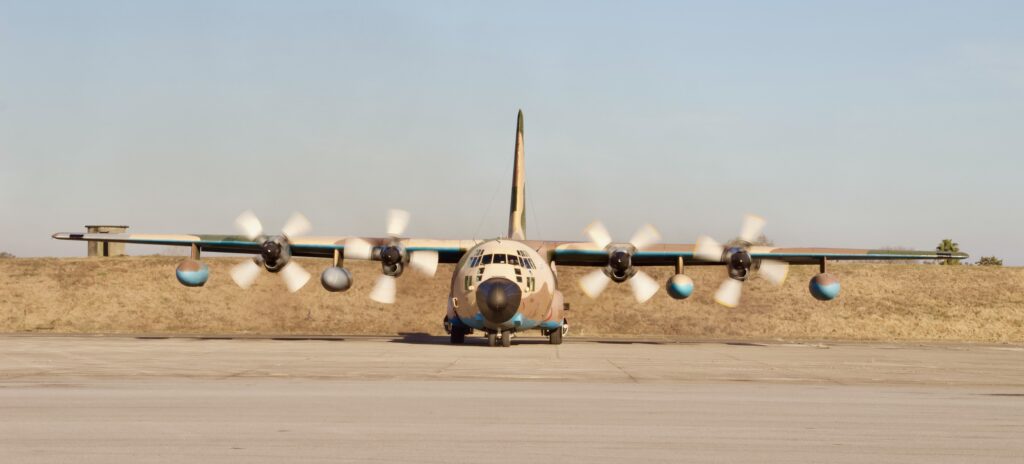
The KC-130H flew with a crew of three pilots, two navigators and seven maintenance non-commissioned officers (NCO); including one flight engineer operating the “Auxiliary Fuel Panel” in the cockpit to supply fuel to the jets. Another NCO was the loadmaster, becoming the eyes and ears of the flight crew during AAR operations. He/she will stand aft in aircraft cabin with clear view of the receiver jets, through both doors at either side of the KC-130H fuselage and maintaining constant intercom communications with the flight crew.

AAR missions are conducted based on the NATO ATP56C manual, a sort of Western World military aviation Air to Air Refuelling ‘bible’, providing detailed operations parameters. Standardisation of procedures and its safety is thus achieved whilst AAR is conducted – in English language – with air forces of different nations. A run down on the Standard Operating Procedures (SOPs) and full details on the tanker’s HDU (Hose Drum Unit) system was given. The HDU is a wing pylon-mounted refuelling pod – looks like an external fuel tank – with one fitted either side under each wing outboard of engines number 1 & 4. It clearly identifies the KC-130H from non refuelling versions of the ubiquitous Hercules. It contains the 27 inch (68 cm) wide ‘probe and drogue’, including a basket attached to a 93 ft (28 mt) long hose. The basket provides a stabilising force once the unit is deployed.
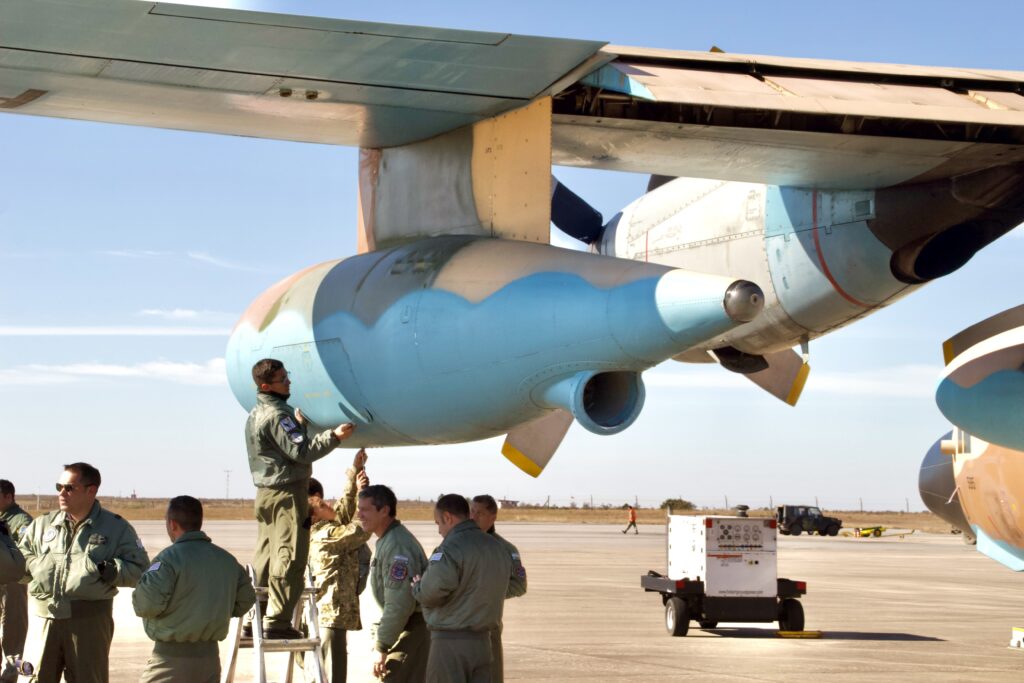


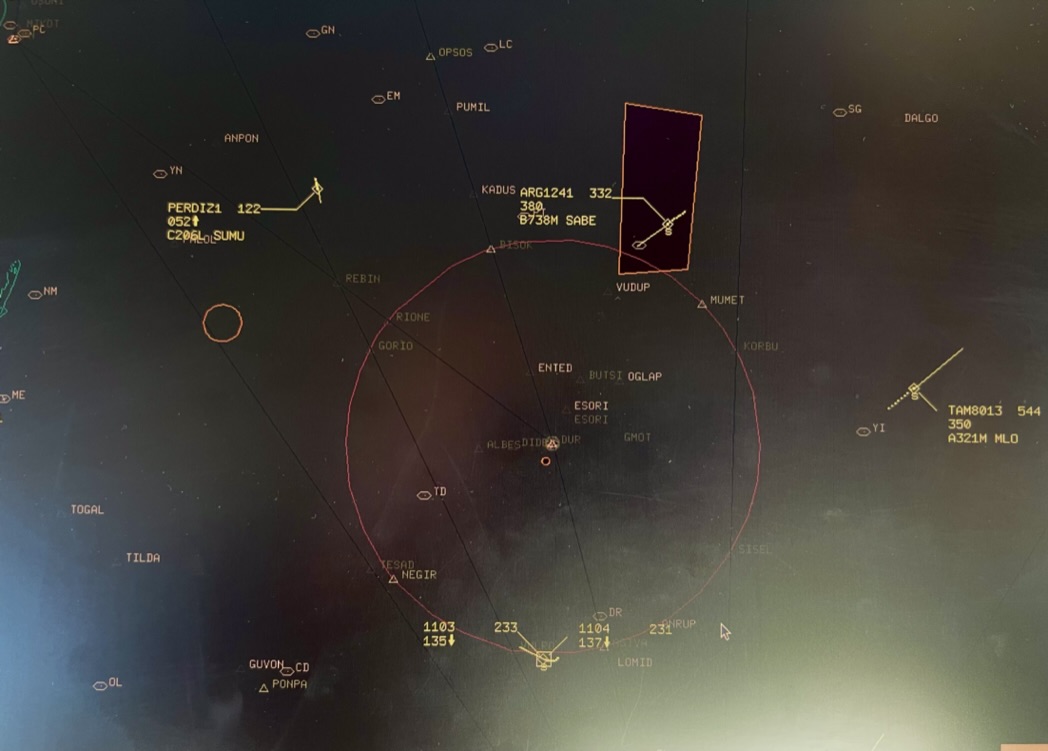
The slower Hercules (callsign TANQUE) departed ahead of the jets deploying to the AAR Area (AARA). This defined rendezvous (RV) area encompasses both a racetrack shape AAR track – each orbit taking 20mins – and its protected airspace. The selected area was some 20nm north of the field on the 350° degrees radial of the Brigada’s VOR (DUR). The chosen altitude and speeds were FL150 and 200Kt, keeping all aircraft within the Durazno TMA and in VFR conditions. Ideally the tanker should be ‘on station’ 30mins before the recipients; allowing time to complete important pre AAR checks, like the extension of the hoses from the HDU (at least three times) and the correct working of all COMM frequencies. Soon after, the two long hoses and baskets would be deployed, with one last call to remind the combat pilots to ensure that all weapons on their jets were ‘safe’. Then the tanker’s ventral red anti-collision beacon would be switched off, indicating that it is ready for the thirsty jets!



ENTER THE DRAGONFLY!
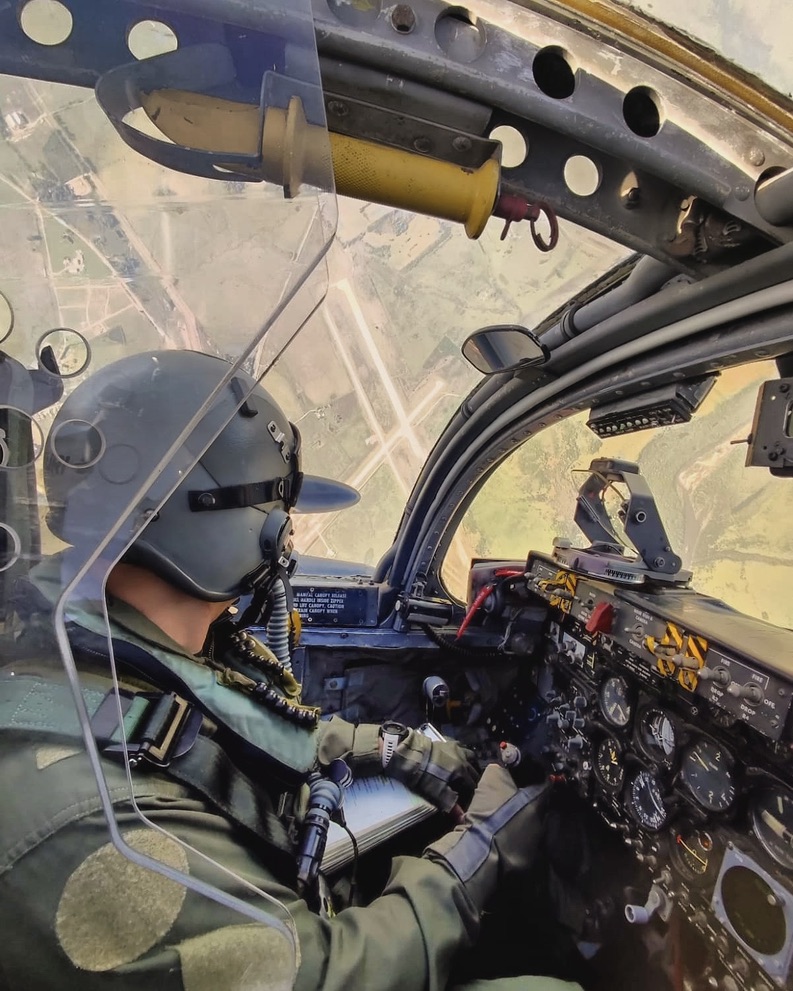
The Dragonfly arrived at the AAR Area with assistance and radar vectors (called RV Alpha or Anchor RV by NATO) provided by a radar control station. As the jets do not have an onboard interception radar, the guidance is provided by the FAU’s Comando Aéreo de Operaciones-COA (Air Operations Command) callsign Halcón (Falcon). Based at Boiso Lanza Air Base, located north of the of Montevideo, it obtains its targets from two Spanish built Indra Lanza 3D (PSR-Primary Surveillance Radar). At the rendezvous – the jet becomes a “receiver” and would proceed towards the tanker from 1000ft below. This action provides a better view of the Hercules – minimising possible loss of visual contact – followed by an echelon right join up, when the receiver then moves slightly forward to be seen by the tanker crew. This is a useful exploit as longitudinal distance from the tanker and rate of closure from behind are hard features to assess, thus a direct join to a position astern the tanker should not be attempted.

Accordingly, all join-ups should be made to a loose echelon position; thus errors in line and overtake speed can be corrected clear of the tanker. With the initial radio and visual contact achieved between the jets and the Hercules, annunciator lights fitted on the trailing edge tip of the HDU lighting system would provide the approaching pilot visual clues as to the tanker state of readiness: Yellow =Ready/Ready for Transfer, Green=Contact/Fuelling in Progress and Red=No Go/Fuel Pressure OFF.
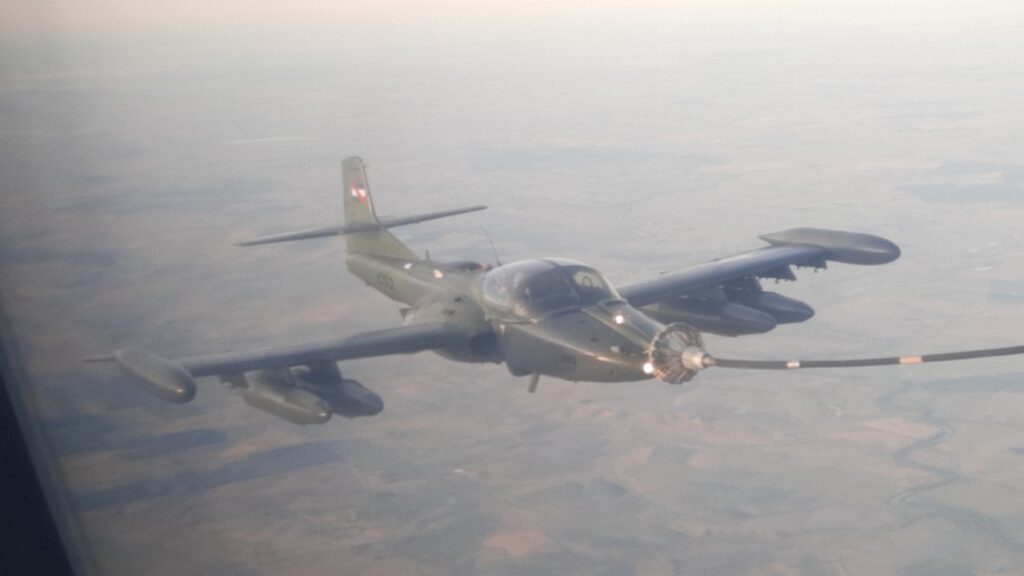
The mission was to complete one “Tema” (Theme) per sortie – approaches to join the tanker and connect into its baskets; whilst all aircraft were on straight and level flight. These would include one echelon right and left approaches, important to practise both due to the Dragonfly side-by-side seating and the shortcomings of a parallax view.
Of all the ‘hookups’, only one would be “wet” (with 1000 lbs of JP1 fuel transferred) and two ‘dry‘ In case of operational delays, it was agree that the Dragonfly thirsty GE J85-17A engines (burning 1500 lt/hr) could take on extra fuel. Fine control stick inputs are needed to achieve a hookup; and for the fuel to flow into the A-37s air refuelling probes, the basket has to be pushed forward by twice its own length (54 in/138 cm), increasing the possibility of spray over the jet, and consequent engine ingestion risking high engine temperatures or compressor stalls.
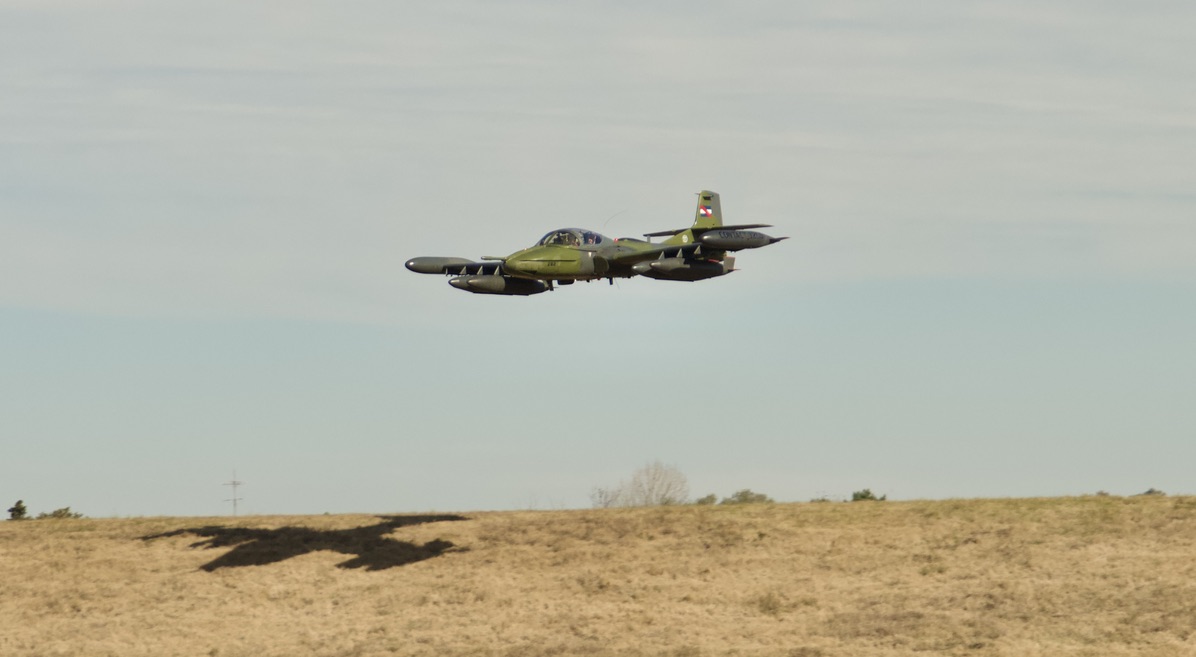


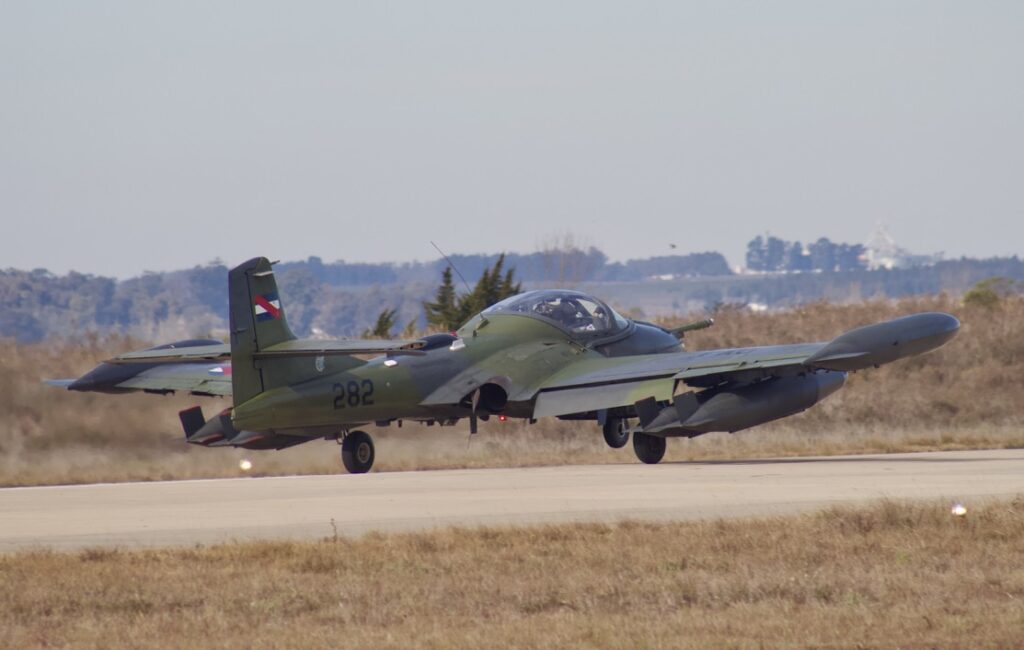
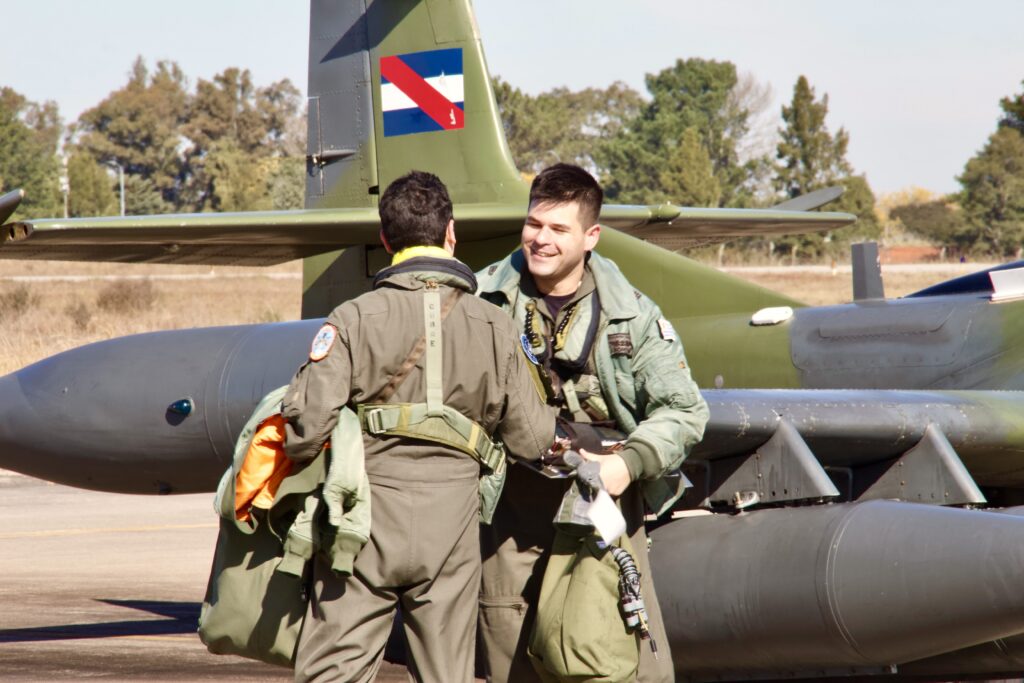
Pilots completing their initial qualification, commented of the high concentration required and tension on arms and hands – with constant inputs on the throttle and control column needed – whilst keeping their eyes set on the target: the ‘basket’. The cockpits of the Dragonfly fleet have been retrofitted and are compatible with Night Vision Goggles (NVG) with the Anvis 9 system presently used; therefore if the force requires to conduct AAR at night, the task could be carried out.
At the end of the missions and once helmets were removed, we could see many young pilots smiling faces and hugs shared with their Argentinian A-4AR pilot comrades.
The purpose of the TANQUE exercise is to strengthen the mutual trust and increase cooperation between the Air Forces of the region, as they all belong to the Sistema de Cooperación entre las Fuerzas Aéreas Americanas – SICOFAA (American Air Forces Cooperation System ). Furthermore participating personnel acquire an adequate level of interoperability, through unified procedures, in order to contribute to the performance of more complex Combined Exercises. Indeed TANQUE 2022 was conducted with the aim to qualify all FAU crews (Dragonfly and Hercules) in AAR in readiness for the SALITRE 2022 International Combined Air Exercise being hosted by the Fuerza Aérea Chilena (FACh-Chilean Air Force) in Antofagasta, northern Chile, during October 2022. This is a requirement to participate in this kind of multinational air exercises; and as AAR pilot qualification is only valid for three months, a further TANQUE was planned for later in the year. Unfortunately due to unforeseen shortages on the logistical chain (the late delivery of overhauled Dragonfly General Electric J-85-17A turbojet engines from an outsourced foreign firm) the FAU presence had to be cancelled.Regretful news as this type of exercise makes it possible to increase and maintain a doctrine of use of the available assets, as well as the provision of adequate professional training and conservation of the skills already acquired by the FAU. With this new great addition to the FAU completed it remains for the service – and the ever hesitant uruguayan political force – to decide on the which combat type to acquire as a Dragonfly replacement, the time is NOW!


TANQUE 2022 IMAGE GALLERY


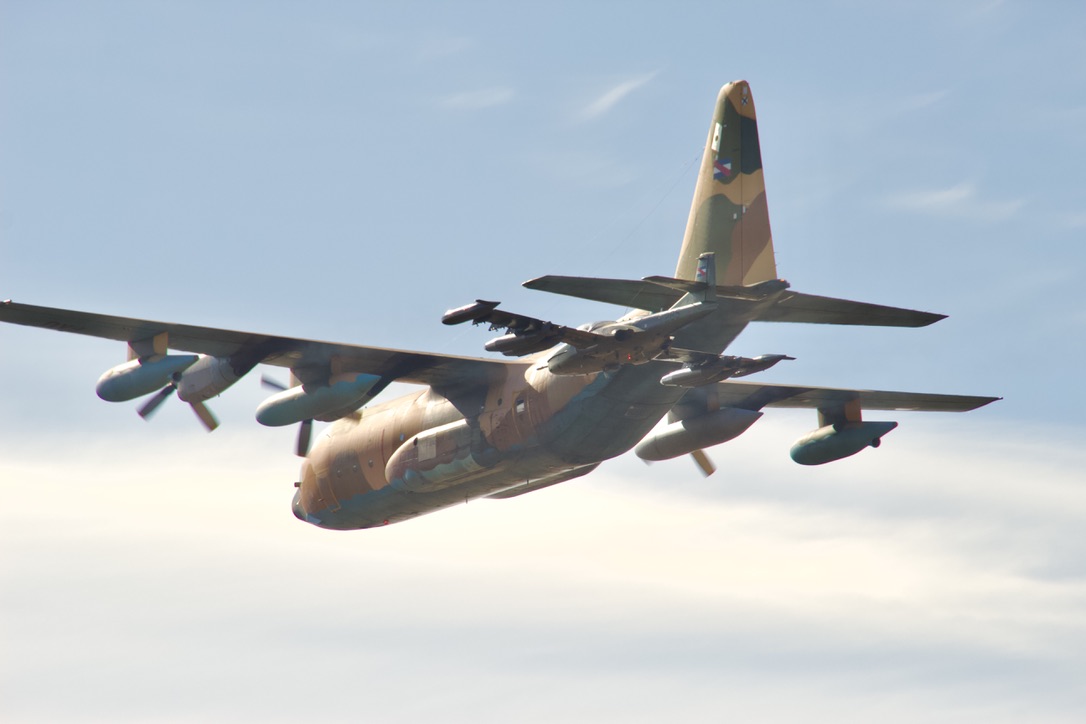
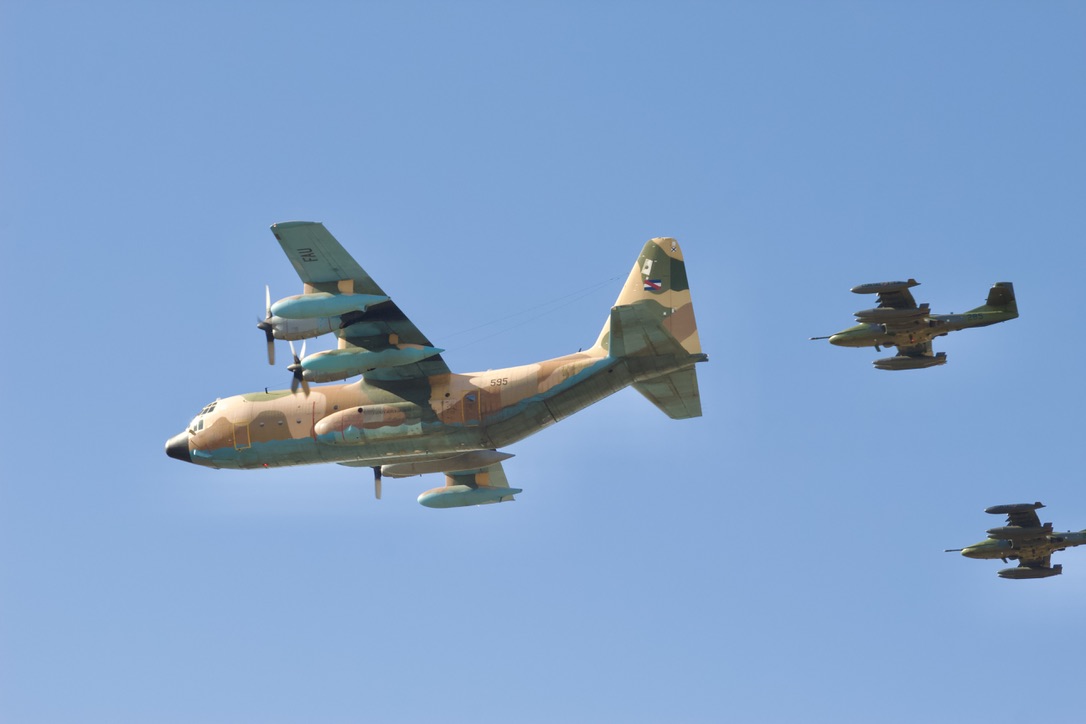
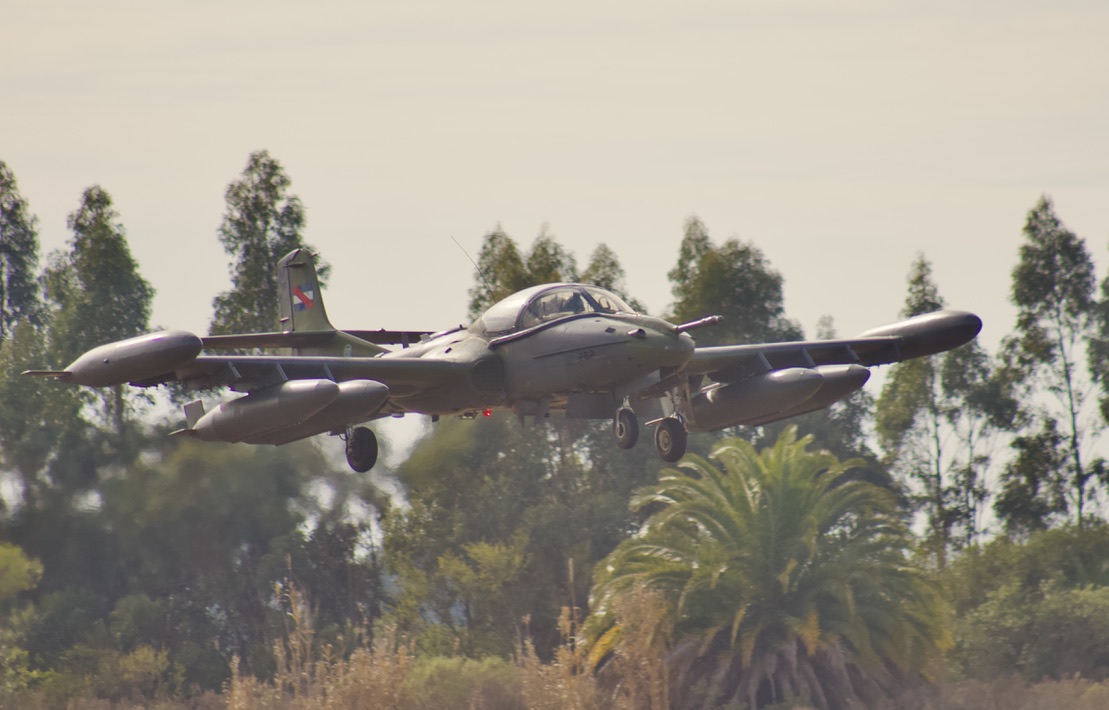
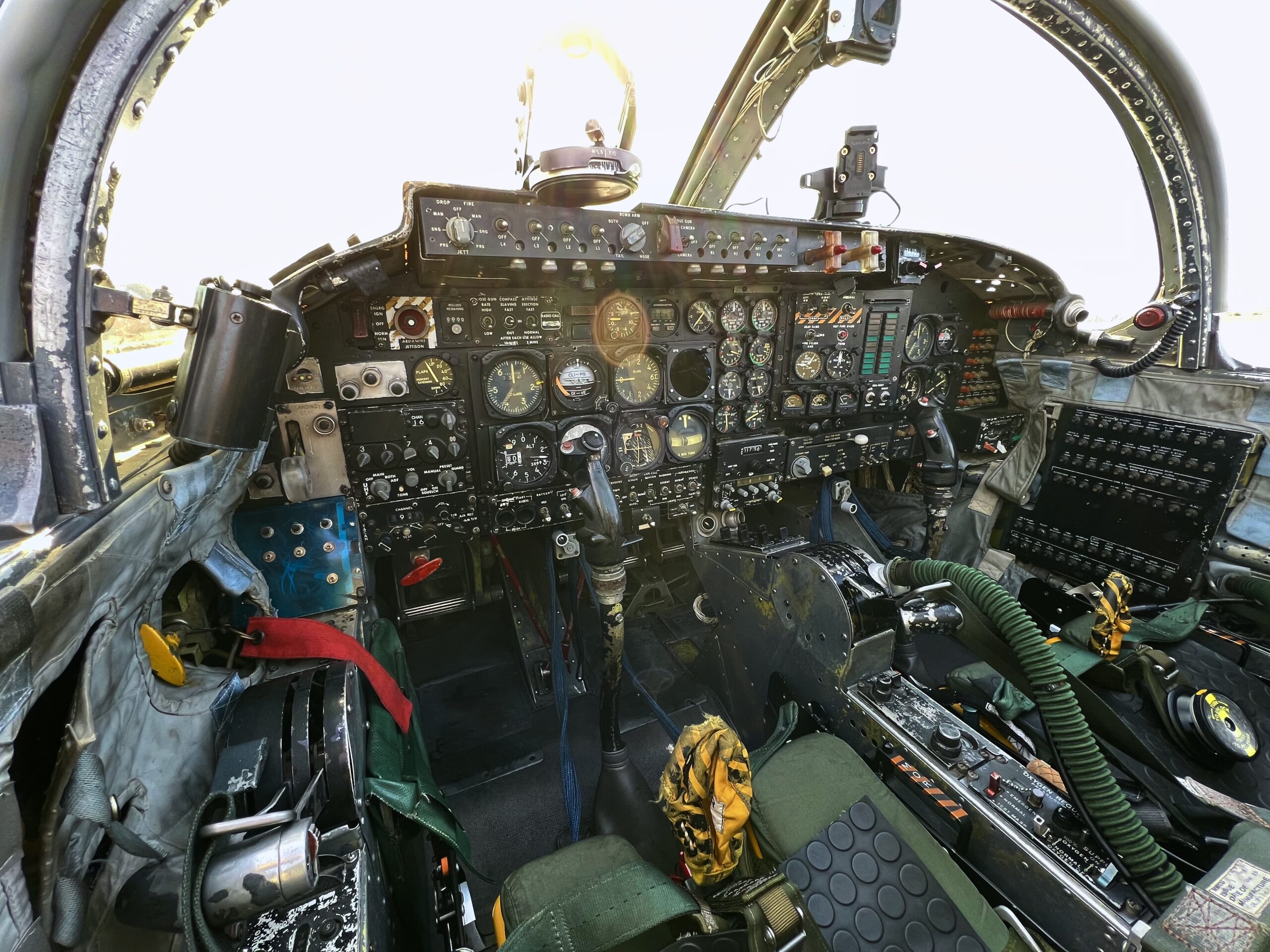
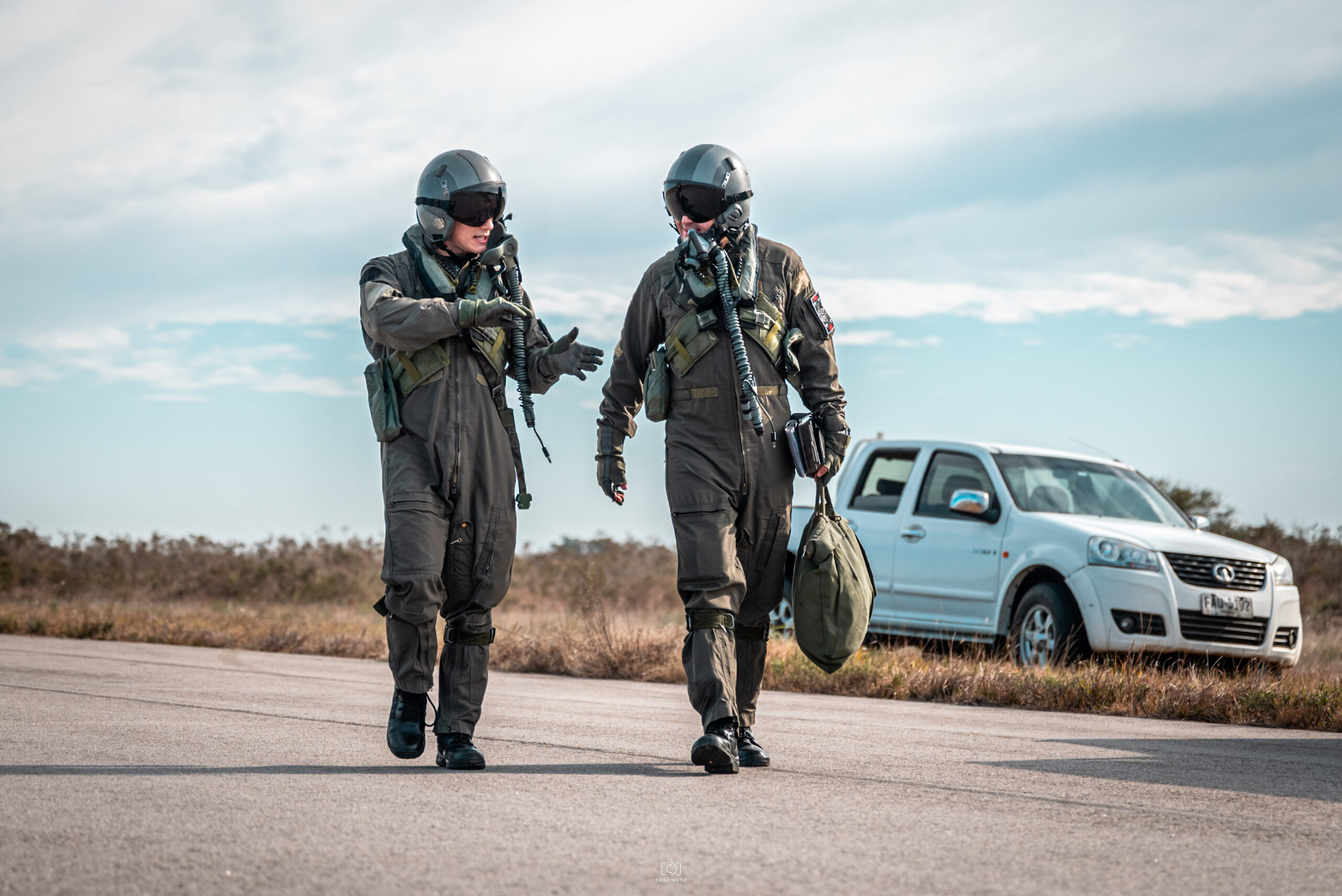
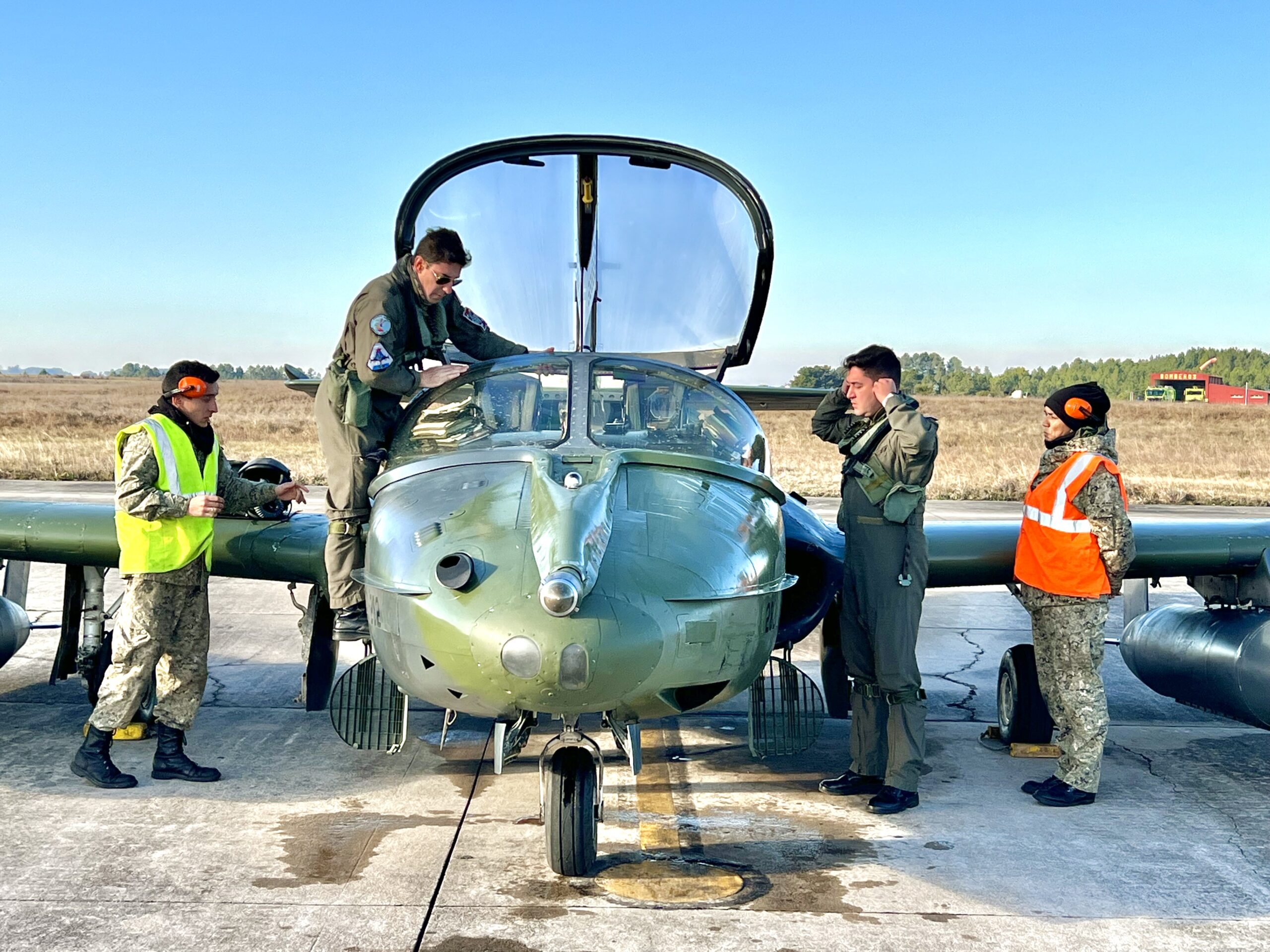

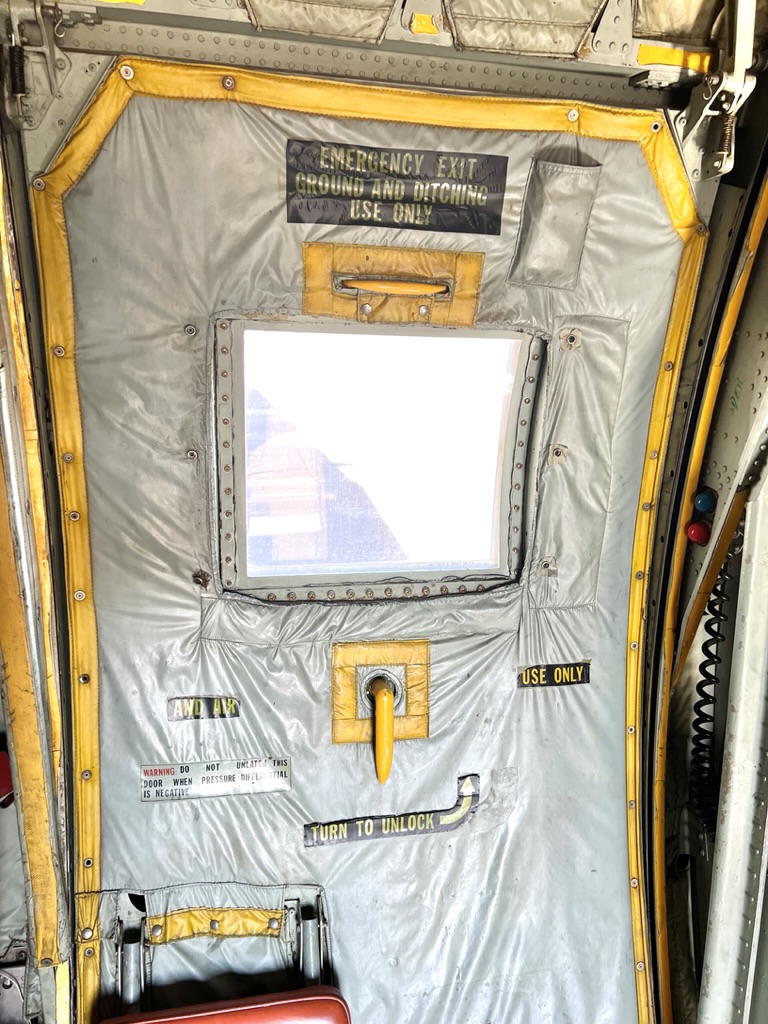
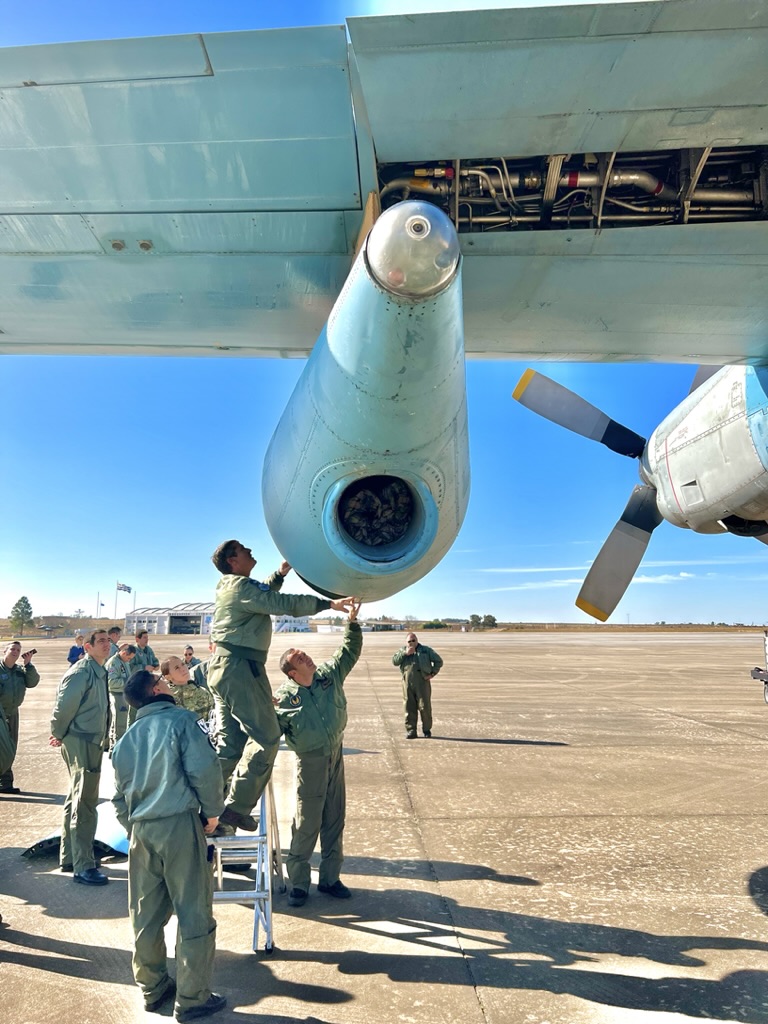

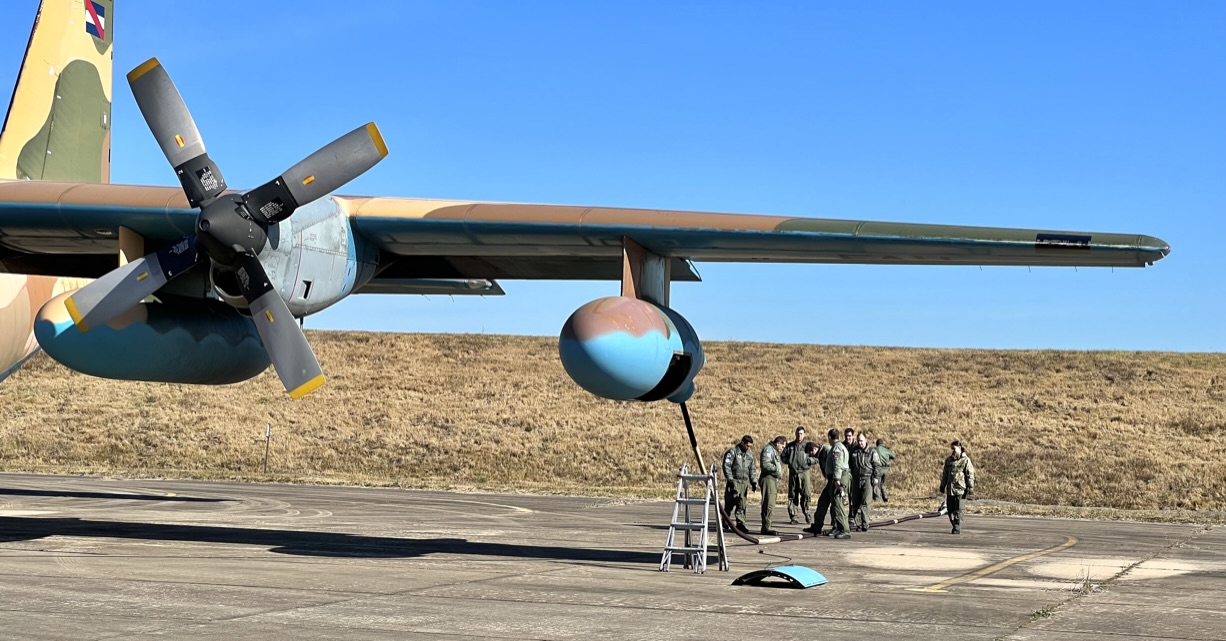


.png)
.png)


